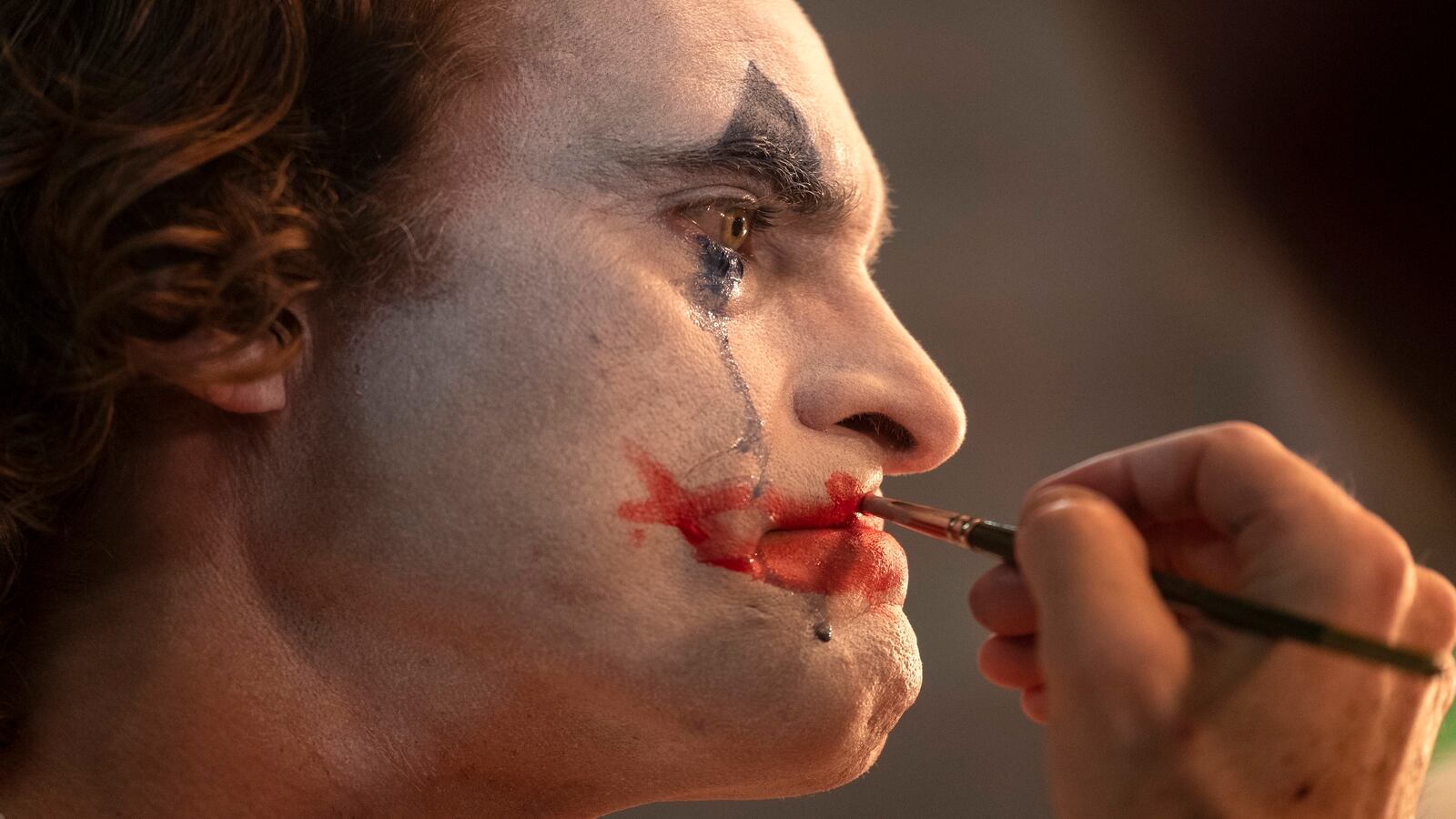VENICE, Italy—There were a number of lingering questions going into Joker, the latest reimagining of the DC supervillain. How would Todd Phillips, the dude behind The Hangover movies, fare as director? Will the third rendering of the terrorist-clown in eleven years be overkill? And just how dark is this thing going to be?
The answer to that last question is: very.
It’s 1981, and Gotham is on the brink of chaos. The streets are covered in trash—owing to a citywide Garbage Strike; poverty is rampant; and mental-health facilities are shuttering due to a scarcity of funds. (Picture the noirish hellscape of Taxi Driver overrun by a particularly vicious strain of “super rats.”) Into that void saunters Arthur Fleck (Joaquin Phoenix), a clown by day and struggling stand-up comic by night. Arthur lives with his elderly mother (Frances Conroy) in a run-down Bronx apartment, and, in true Norman Bates fashion, worships the ground she walks on—bathing her, confiding in her, and spending every night with her tuning in to their favorite variety show, Live with Murray Franklin. In Murray (Robert De Niro), Arthur sees the solicitous father figure he never had.
Arthur is, more than anything, a child desperately searching for identity and a sense of belonging. “I just hope my death makes more cents [sic] than my life,” he’s scribbled in his journal, a collection of deranged musings on his everyday trials and humiliations.
His bouts of uncontrollable, screeching laughter—delivered at the most inopportune of times—underline his emotional puerility. He is subject to an unrelenting stream of abuse, from the neighborhood kids who jump him on the job to his condescending boss branding him a “weirdo.” He is also deeply mentally ill, and without therapy or medication, his outbursts turn violent.
Joker owes more to ‘70s-era Scorsese than its period detail and Stygian lighting, of course. Arthur combines the PTSD-fueled anarchist rage of Travis Bickle (whom De Niro modeled after an underground New York comedian) with the star-chasing delusions of Rupert Pupkin, and Phoenix is more than up to the task, his world-beaten face transmogrifying from gaiety to menace in an instant. Much has been made of how the 44-year-old recast his body for the role, dropping 52 pounds to depict this disturbed shell of a man, all raised shoulders and sunken chest. But more than that, he and Phillips have presented us with a compelling portrait of “God’s lonely man” whose simmering rage turns to a boil. And Phillips, utilizing clever tracking shots, tight close-ups and lost-in-the-crowd framing to convey Arthur’s existential angst, has made us forget about those agonizing Hangover sequels.
Unfortunately, the film errs in its on-the-nose depiction of politics and class warfare. After Arthur murders a trio of Wall Street bankers on the subway, he becomes a hero to Gotham’s 99 percent, igniting a “Kill the Rich” campaign that sees the have-nots adopt his clown mask as a symbol of social rebellion, a la Guy Fawkes. The whole ordeal makes Bane’s Stock Exchange-takeover seem subtle by comparison.
On the other end of the spectrum is Thomas Wayne, who—if Arthur’s mother is to be believed—may be the father who abandoned him at birth (yes, that would make Joker the half-brother of Bruce Wayne, aka Batman). Thomas is running for mayor of Gotham, and his out-of-touch billionaire has echoes of Trump, at one point proclaiming of the city’s poor: “I’m their only hope.”
Clunky social themes and thinly-drawn supporting players though it may have, Joker succeeds thanks to the talents of Phoenix, who’s crafted a layered, terror-inducing antagonist, and earned his rightful place alongside Heath Ledger and Jack Nicholson in the pantheon of all-time-great Jokers.







